There are probably as many procedures for making pasta as there are cooks. Don’t worry if our way is different from yours; it’s your kitchen. Still, we may give you some ideas. This is one way to make pasta, and we really enjoyed eating the pasta that’s pictured!
The list of ingredients is in the recipe for your pasta project.
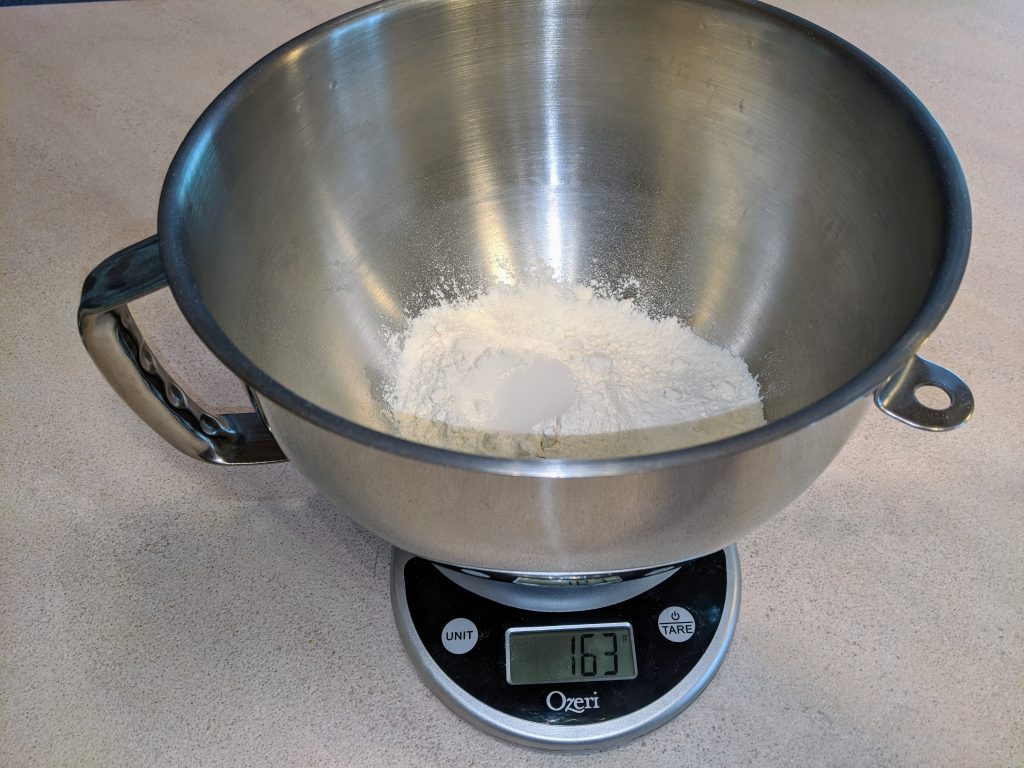
Measure or weigh out the flour for your pasta recipe in the bowl for your mixer.
All-purpose flour is shown here, but you can use seminola, “00” flour, wheat flour, etc. I often use a 50/50 blend of seminola and all-purpose flours.
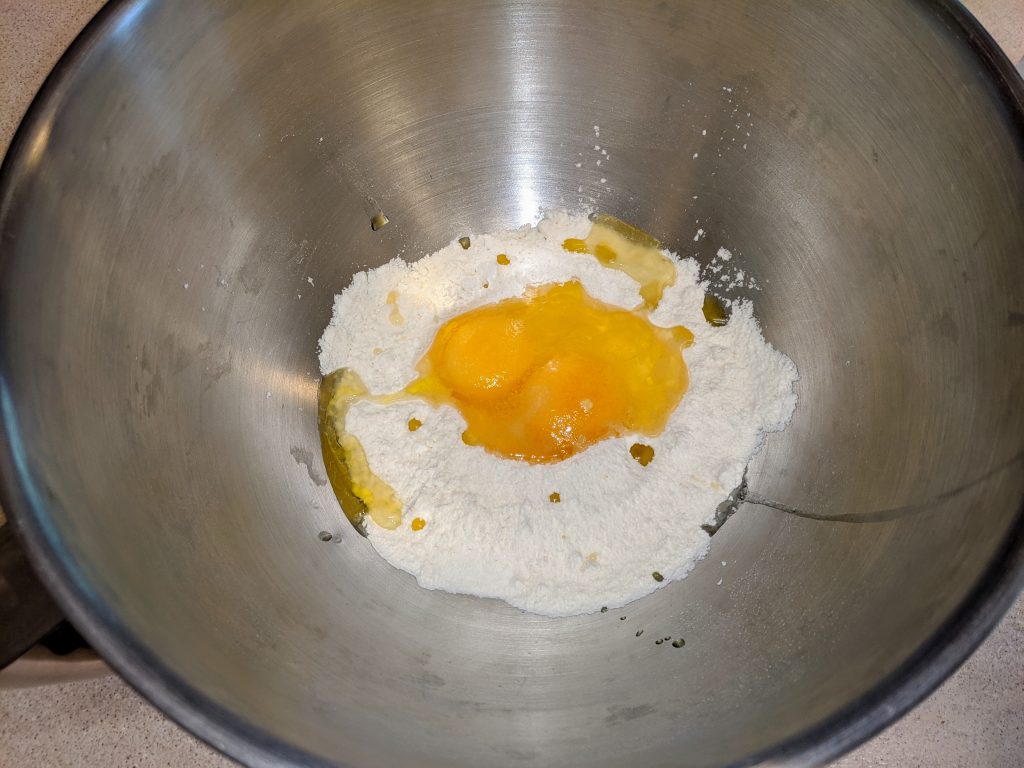
Add the eggs, olive oil and salt.
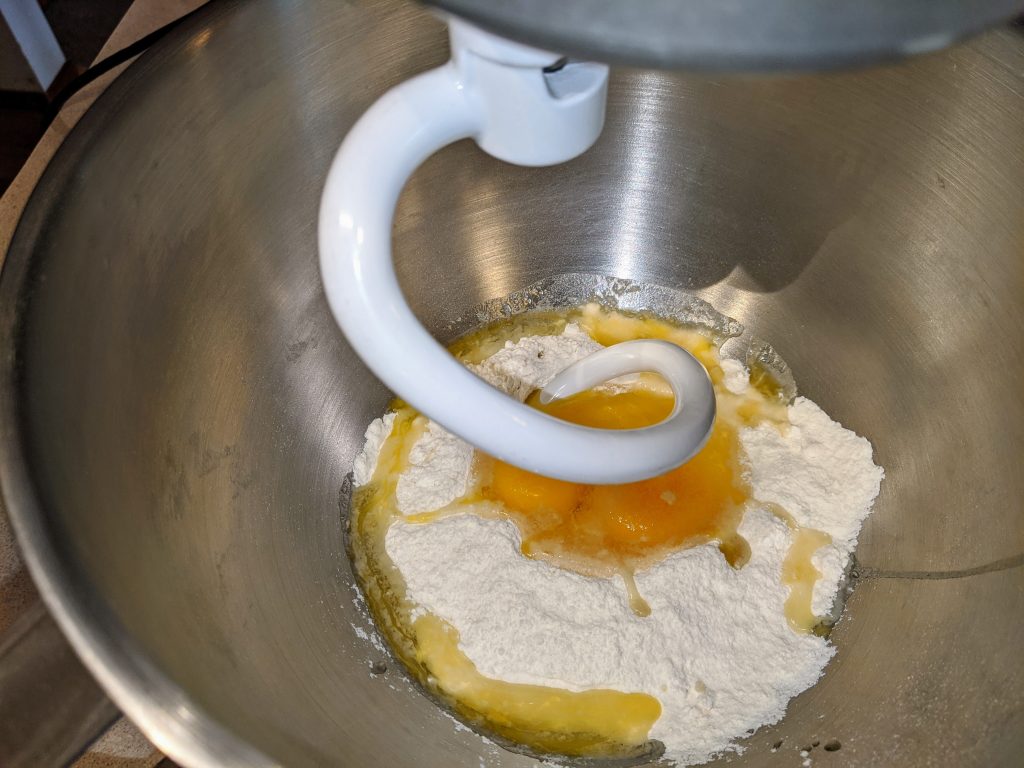
There are lots of ways to do this. You can use a fork, a spatula, a food processor, or a pasta mixer. You can put the blade attachment in your stand mixer.
Here, the dough hook is shown. Just run it at a low speed (2). It requires a little extra spatula work (see below) but it saves cleaning more equipment.
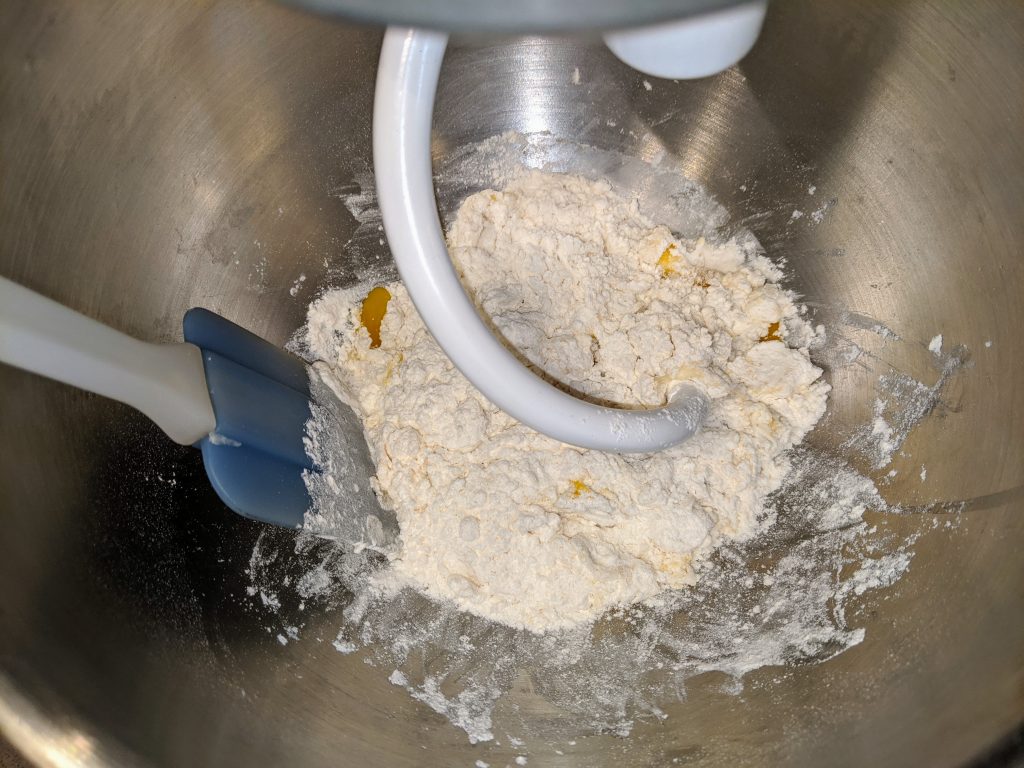
Stop the mixer a few times and use your spatula to push the flour into range of the accumulating dough and the hook.
Be sure you push the spatula down under to the center of the bowl so stuff won’t stick there.
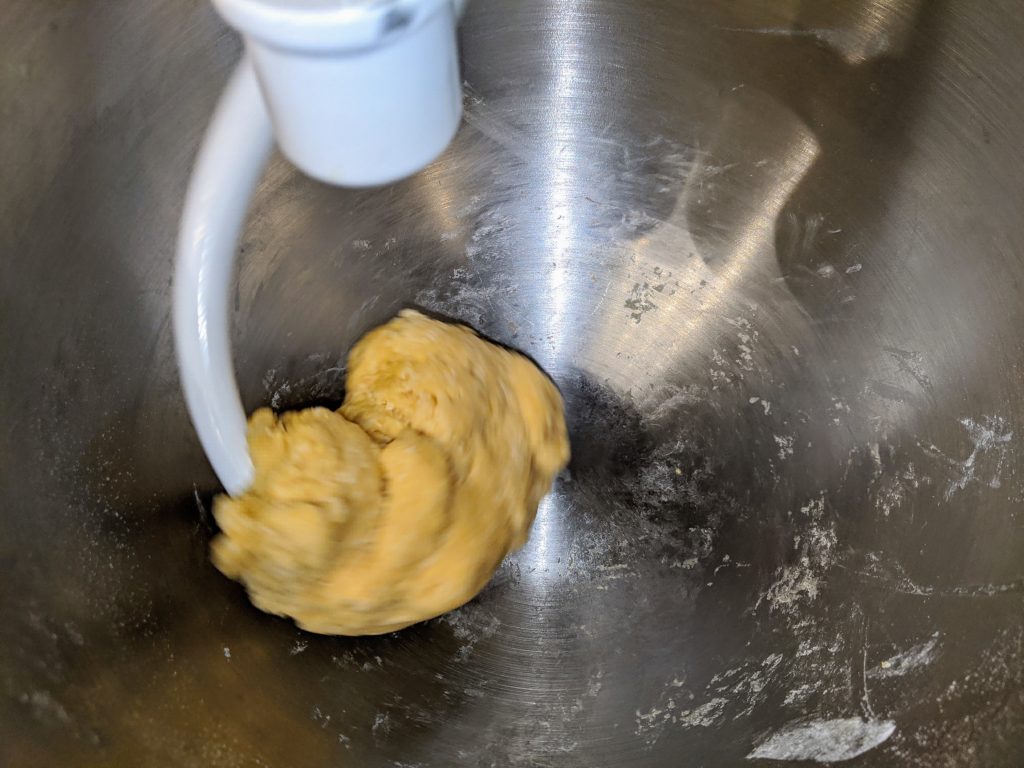
Once a dough forms, use the dough hook to knead it.
If the dough creeps up the hook so it’s just spinning, stop the mixer and push the dough off the hook.
If you prefer, you can put the dough on a floured surface and knead it by hand.
Knead 3 to 5 minutes.
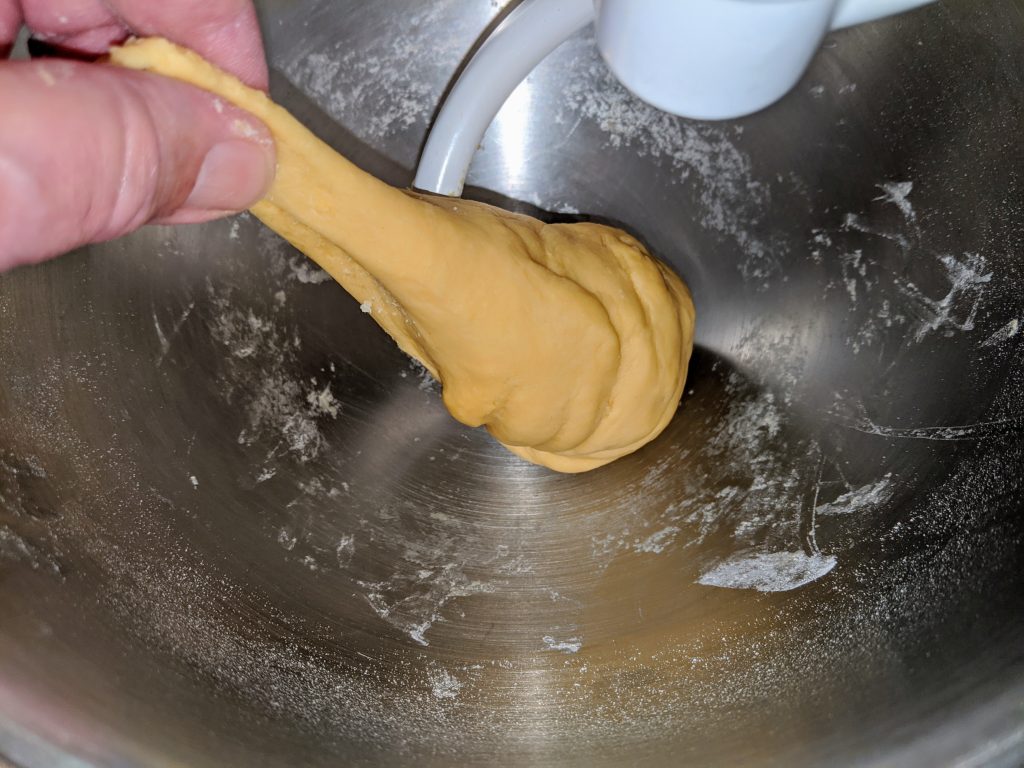
Knead the dough until it is smooth and stretchy.
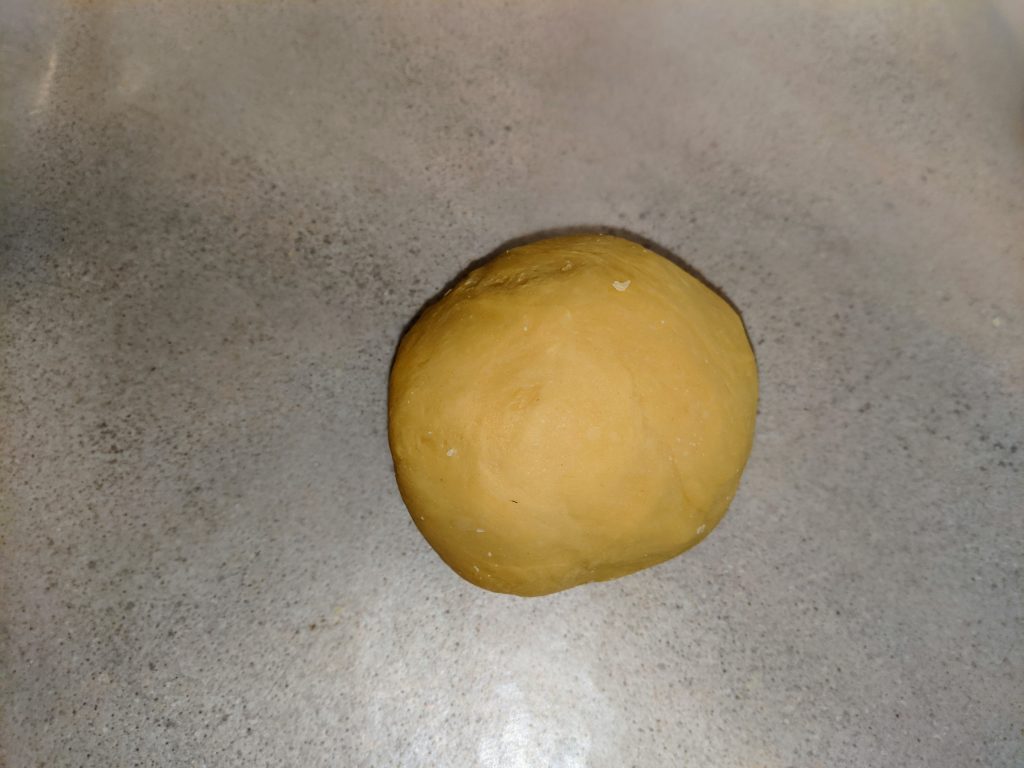
Put the dough on a floured surface and use floured hands to shape it into a ball.
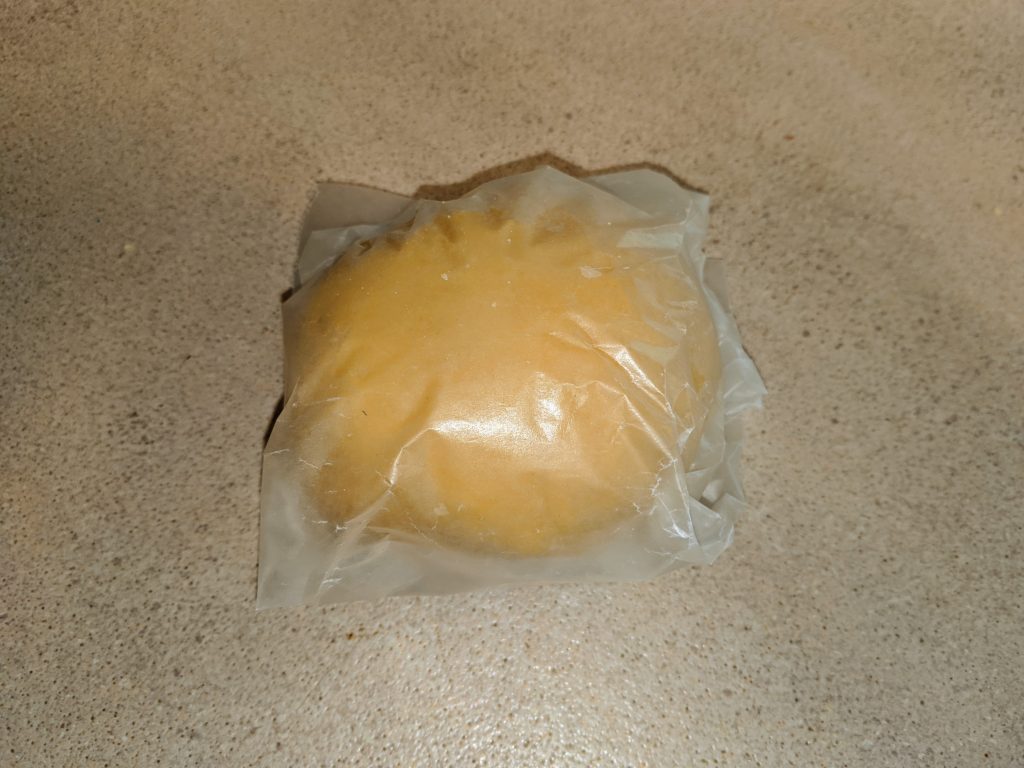
Wrap the ball in wax paper and chill in the refrigerator.
Refrigerate at least 30 minutes or up to a day.
Take the dough out of the refrigerator and let it come back to room temperature.
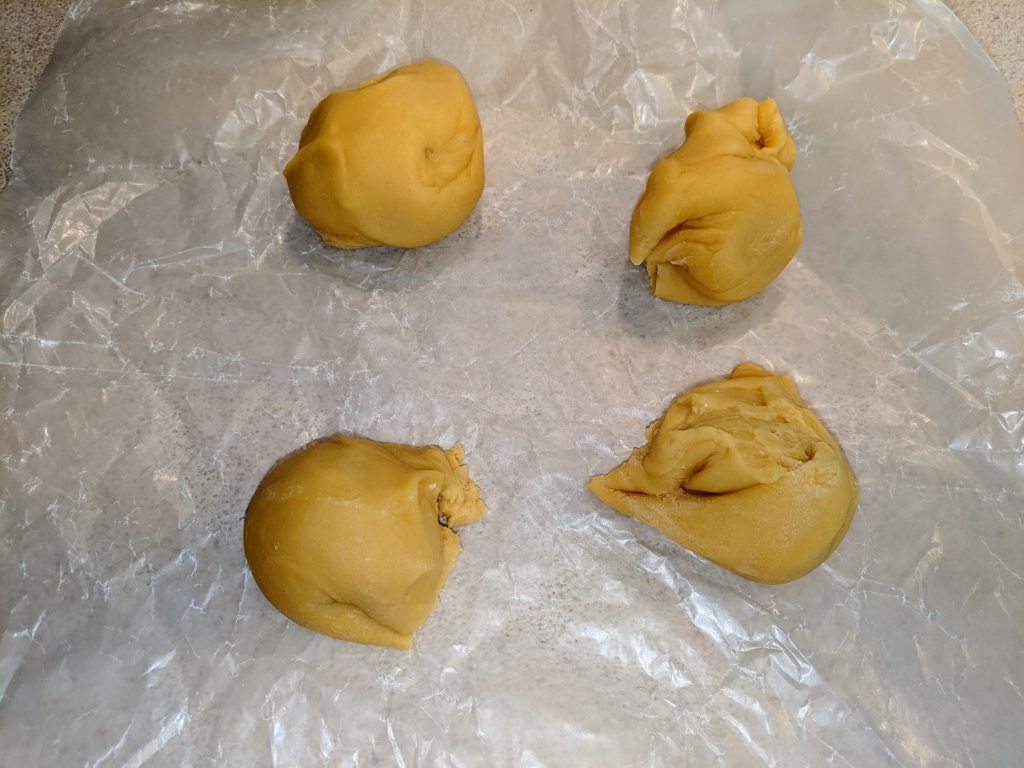
Break the dough into pieces about the size of ping pong balls.
The bigger the ball, the longer the noodles. You want to be able to handle them.
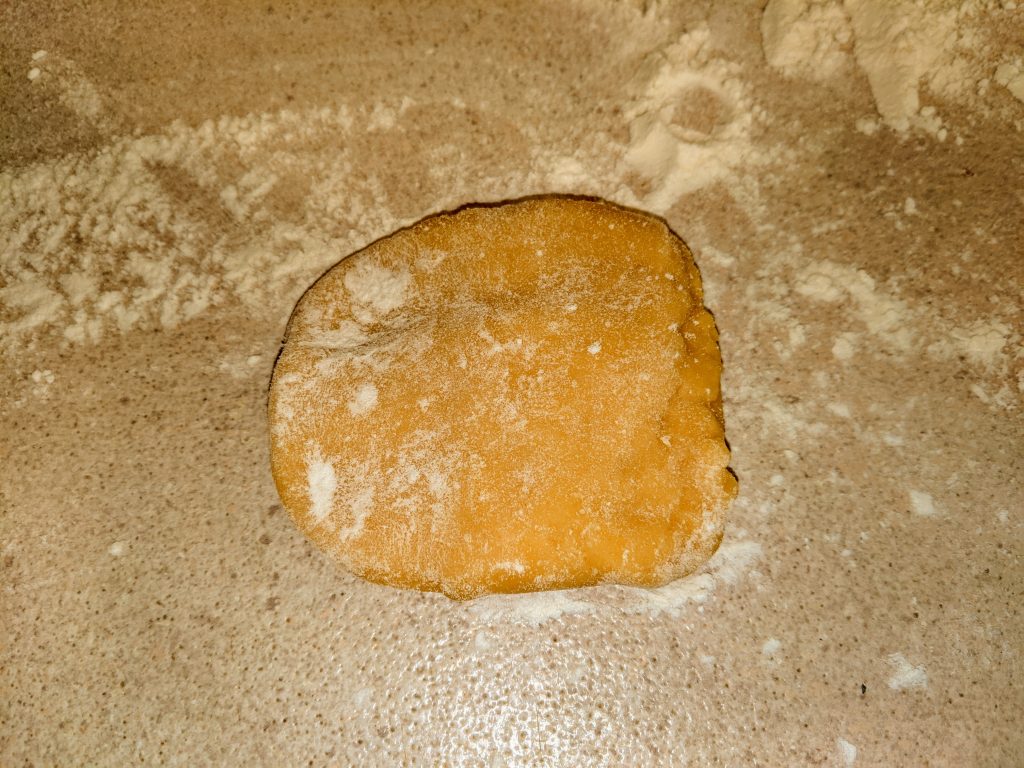
Shape each dough ball into a flat rectangle about the size of a credit card, and flatten one edge so it can go into the rolling machine. Flour your counter generously, pat the dough on the flour, and brush it off.
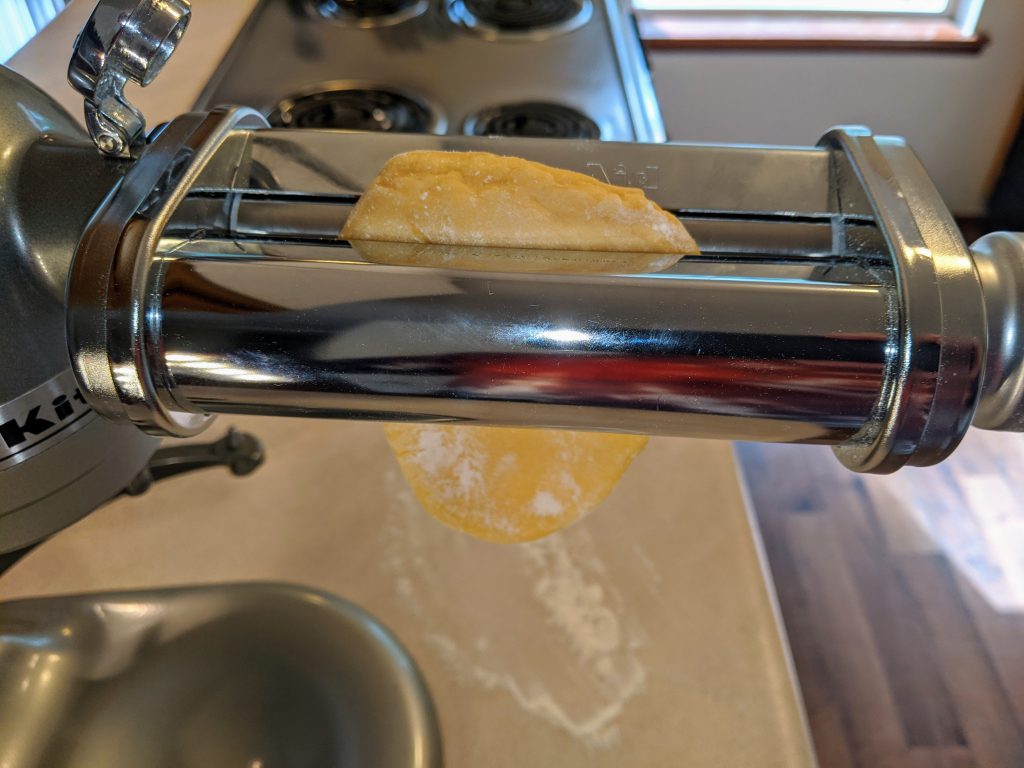
There are lots of ways to do this. You can use a hand-cranked pasta roller, or just roll it out on the counter with a rolling pin.
Here, a motorized roller is shown. Run it at a fairly low speed (4). Start with the roller on the first setting, and run the dough through once.
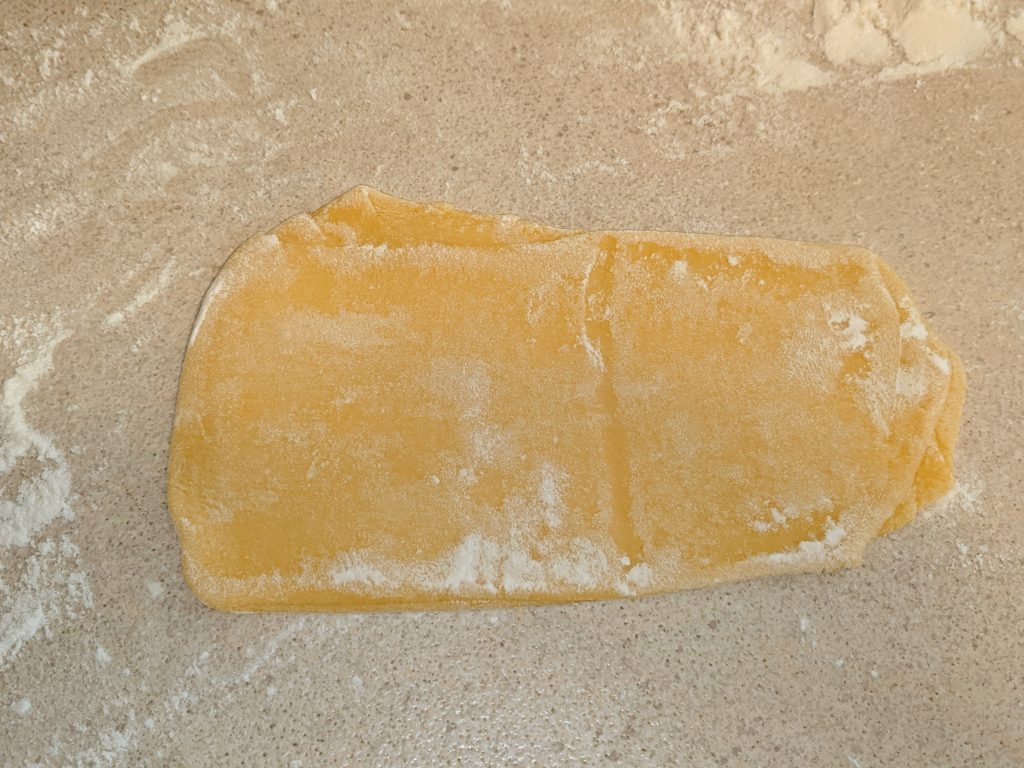
In the next few steps, any time the dough starts to feel sticky, pat it on the floured counter again, and brush it off again.
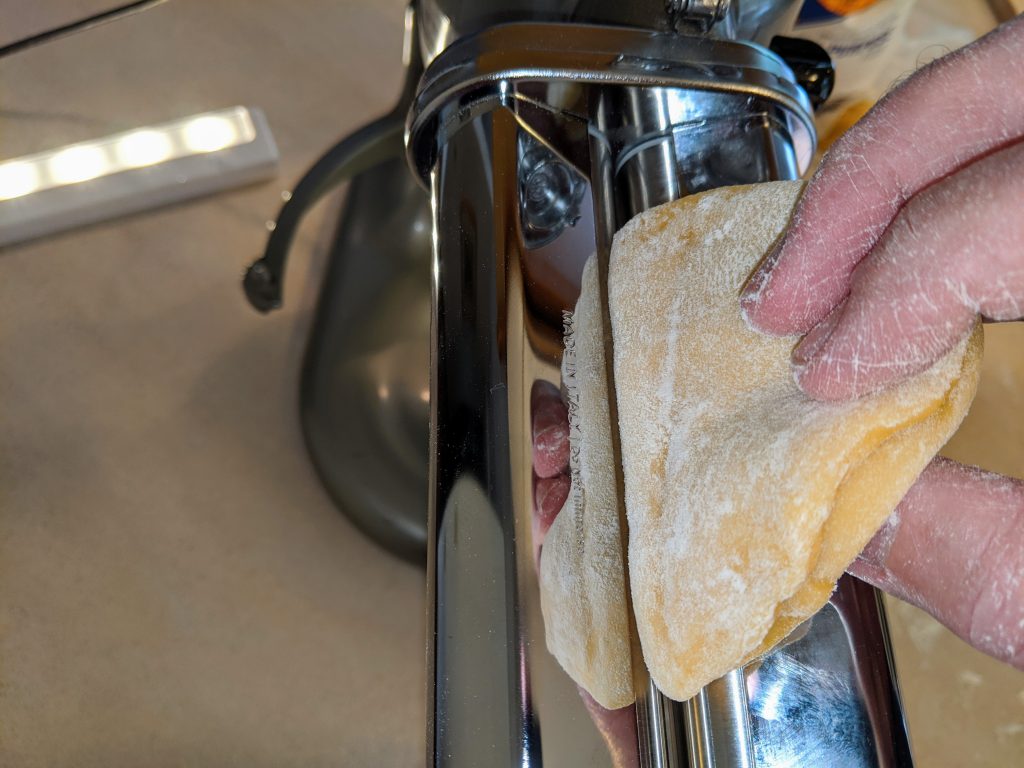
Fold the dough in half and flatten the fold. Run the folded dough through again on setting 1. Fold and roll several times, and then run it through setting 1 again once or twice just for good measure.
This process is not just flattening the dough, but it’s also continuing the kneading and making the dough more supple.
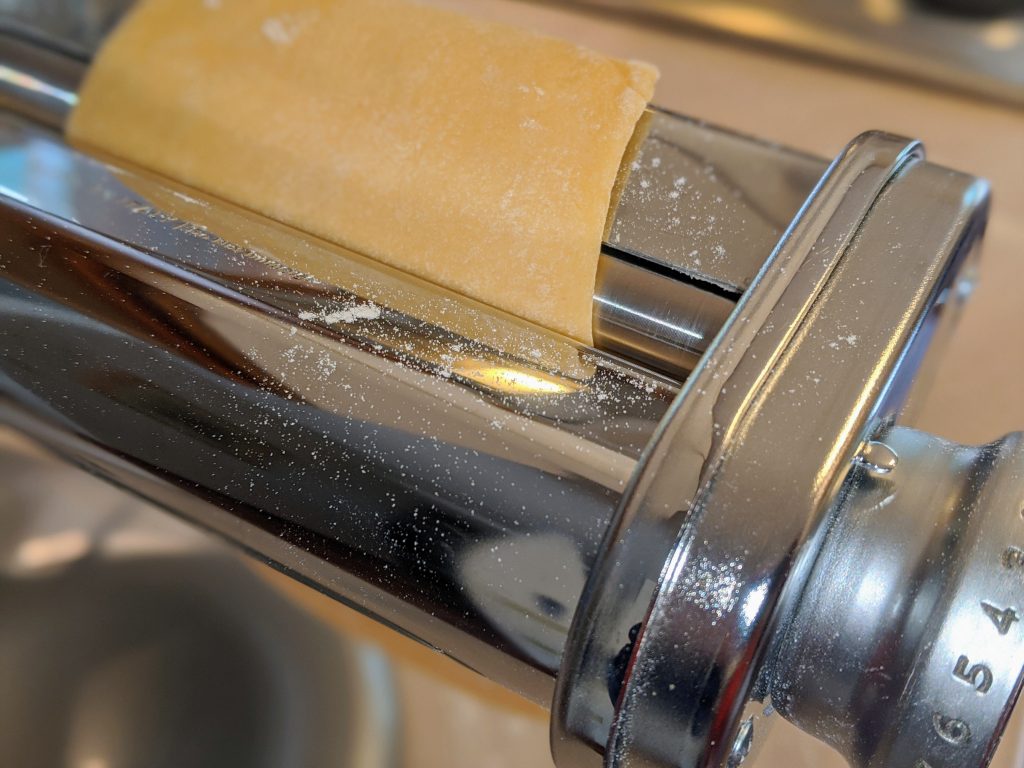
After setting 1 comes setting 2. Run the dough through setting 2 several times.

Keep advancing through the settings. As soon as the dough comes through smooth and flat, advance to the next setting, otherwise run the same setting again.
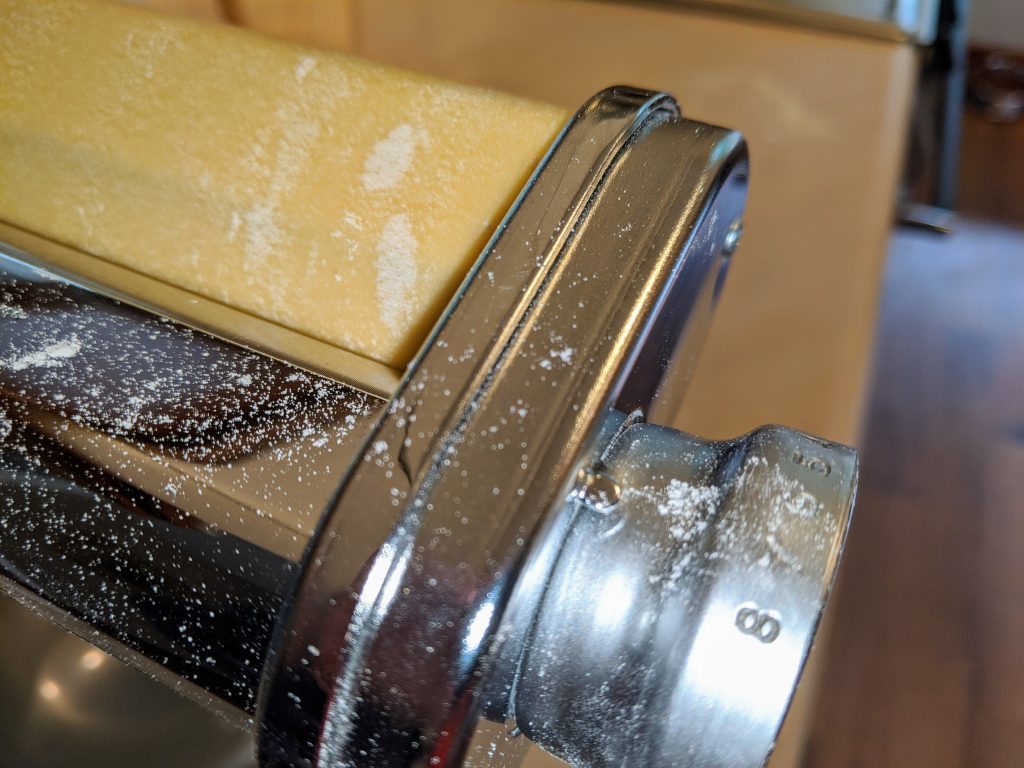
For these noodles, I stopped after setting 7.
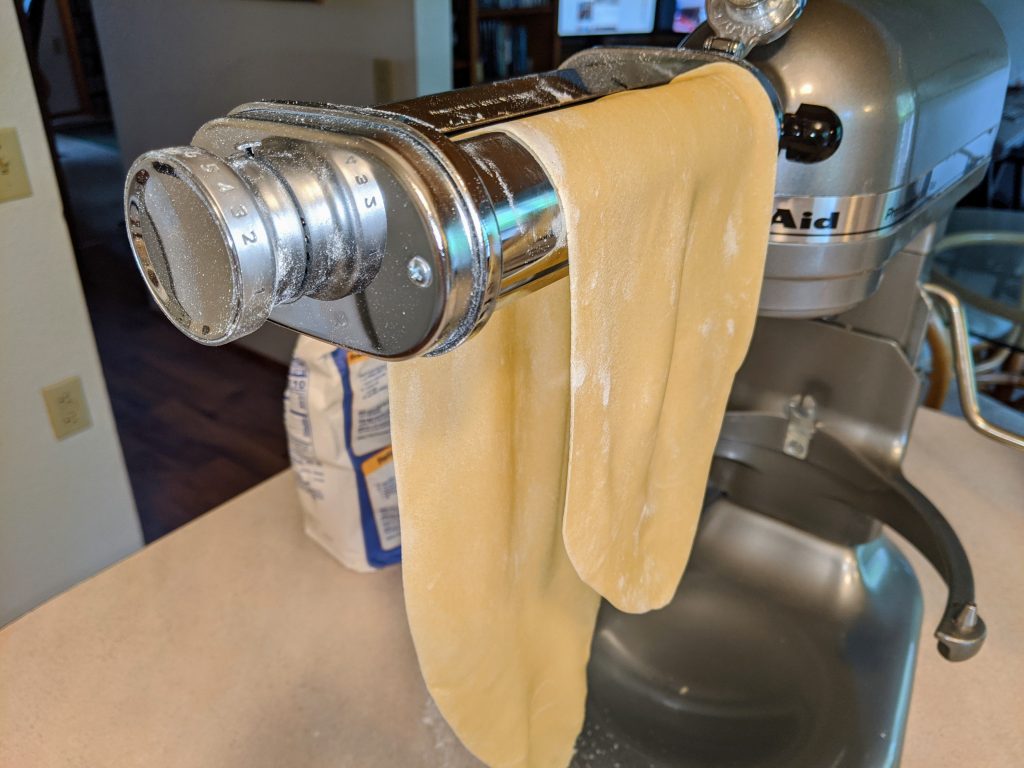
You might make the noodles thicker or thinner, depending on what you’re doing with them.
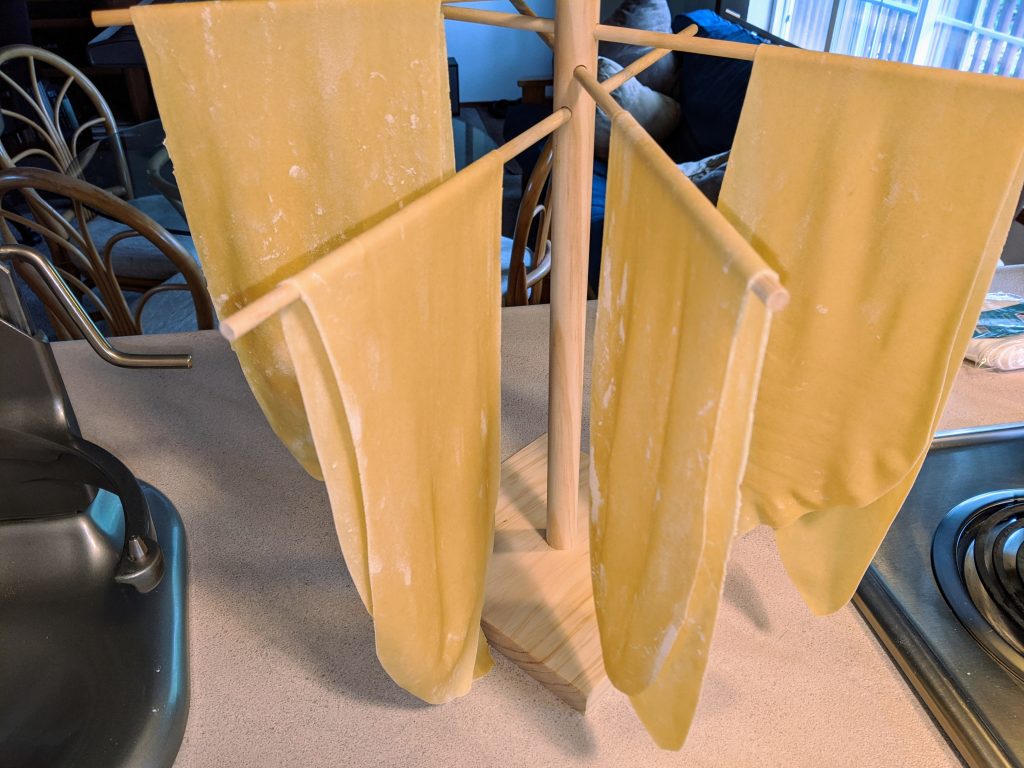
Make a noodle out of each ball. Hang the noodles on a rack as you finish them.
If you don’t have a rack, lay them out on a floured flat surface.
You can use these noodles just like this for lasagna by cutting them to fit the pan with scissors. You can use two of them for a ravioli machine, or one or two of them for hand-made ravioli.

Don’t get your roller wet. Brush all the flour off it, and then make it shiny all over again with a paper towel before you put it away.
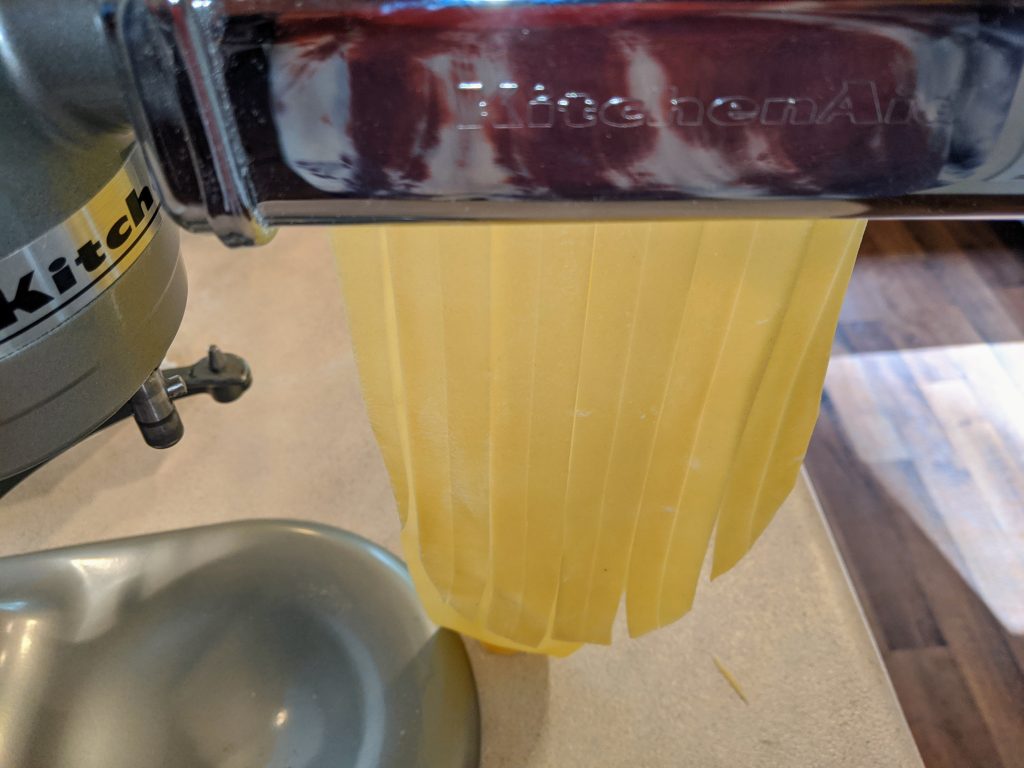
There are lots of ways you can do this. You can use a hand cranked pasta cutter or a hand cutter. Last resort is to roll the noodle up into a cylinder, flatten it, cut it into thin slices with scissors, and then unroll the slices.
Here a motorized noodle cutter is used to make large noodles. Run the noodle through it just like the noodle roller. Catch the cut noodles with your hand and put them back on the rack.
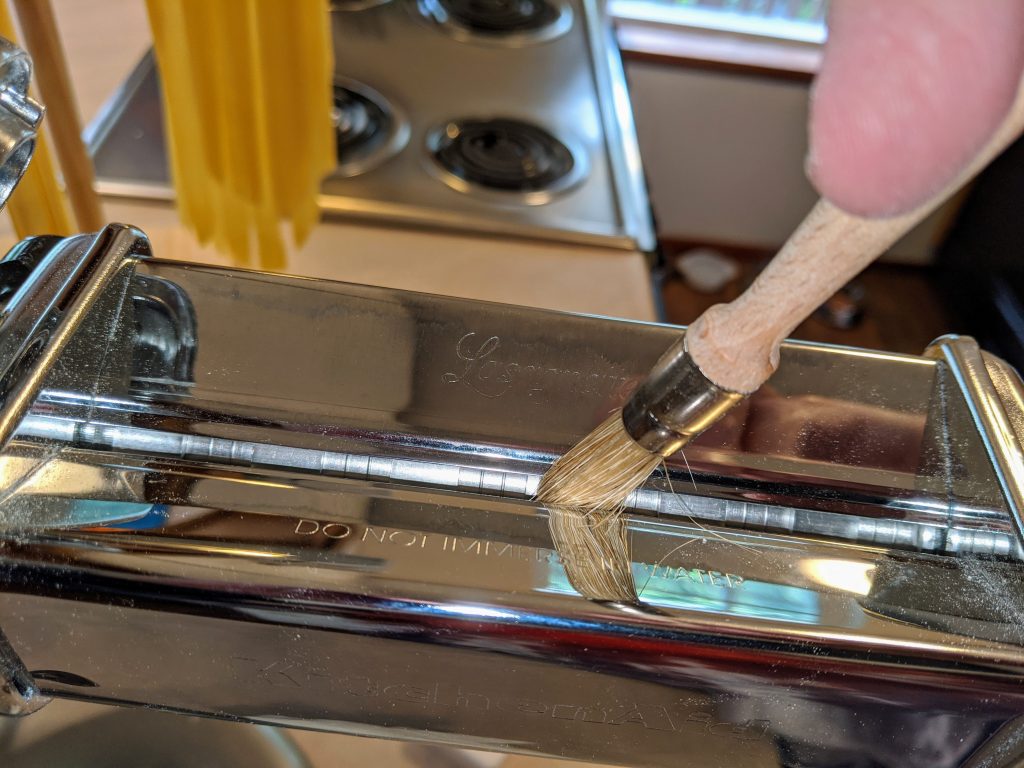
Don’t get your cutter wet. Brush all the flour off it, and then make it shiny all over again with a paper towel before you put it away.
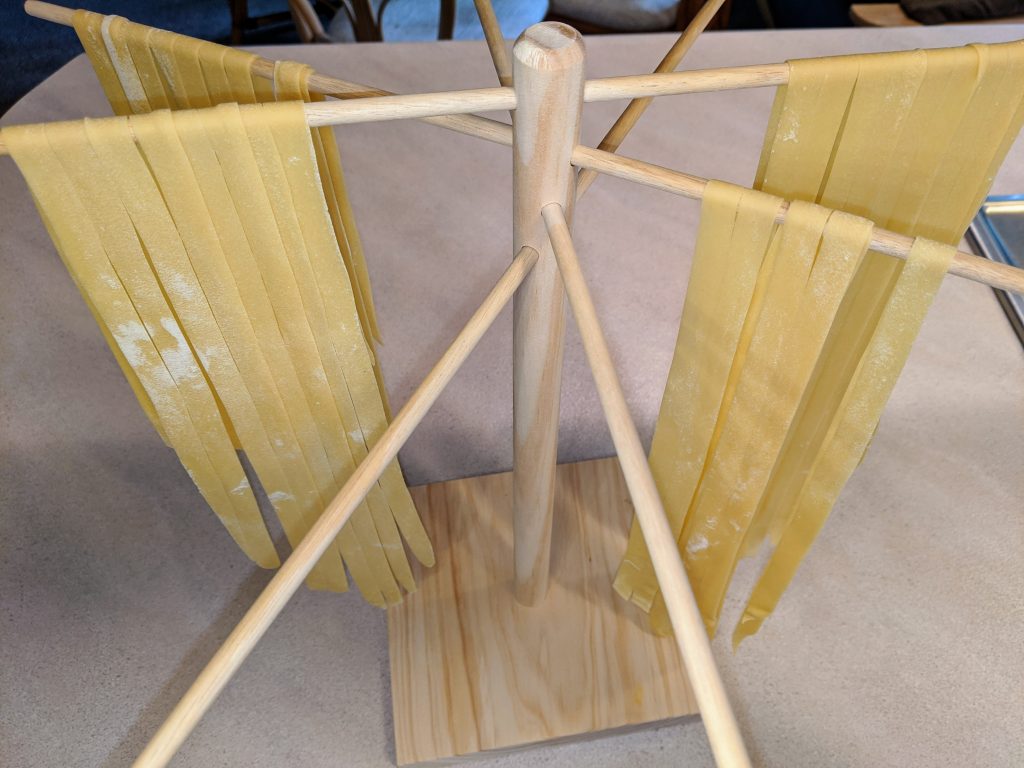
Hang up the noodles on a rack for up to a few hours.
After a few hours, you can store them in an airtight container for a few days.
If you don’t have a rack, cut them in groups into 5″ to 8″ pieces, and spiral each group into a “nest”.
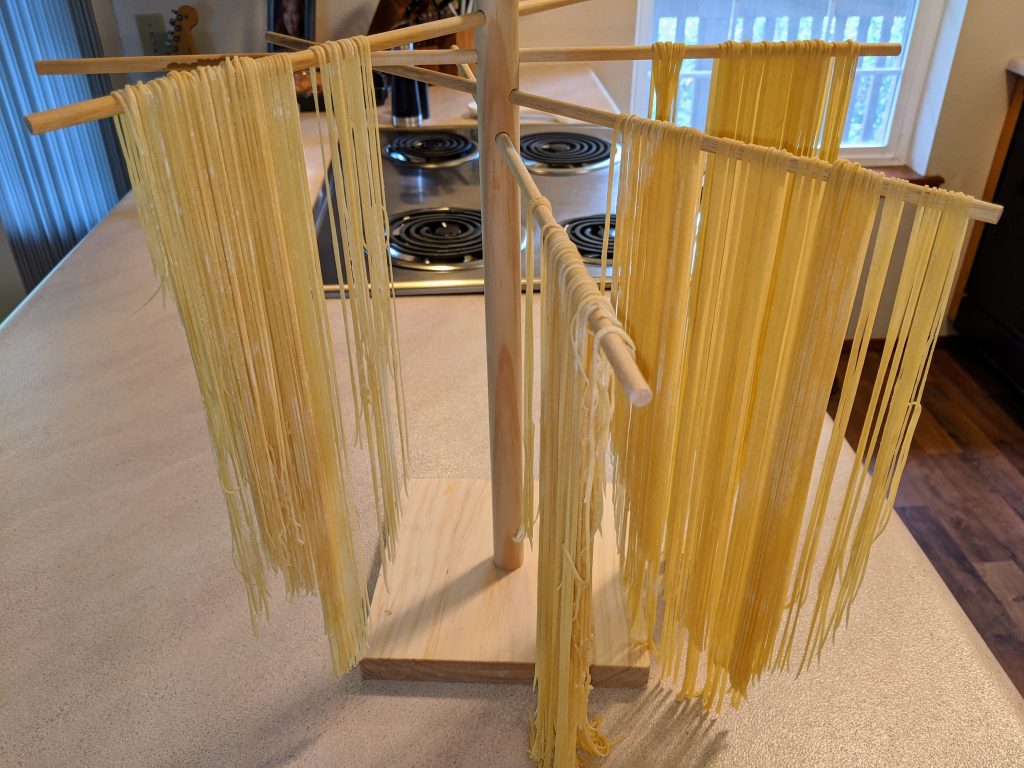
You can make different sized noodles with a different cutter. These are angel hair.
Wait until about ten minutes before you are going to serve.
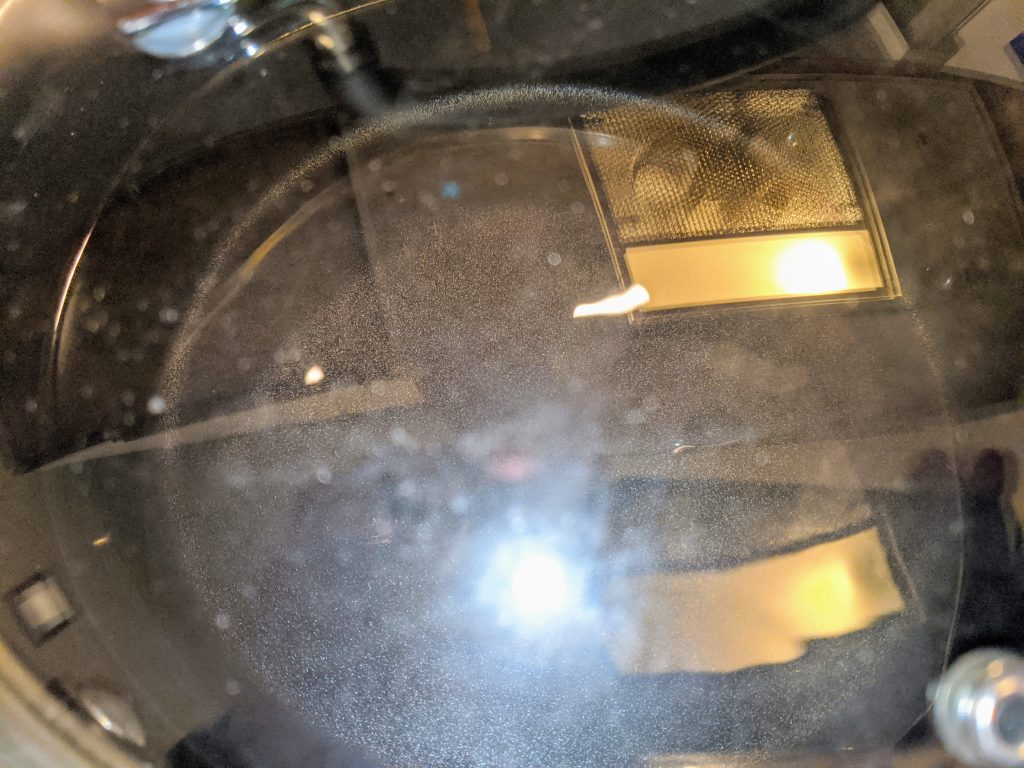
Bring at least three quarts of water to a full boil in a covered pan. Put about 1/4 cup of salt in the water.
Yes, you want it that salty!

Remove the cover when the water starts to boil.
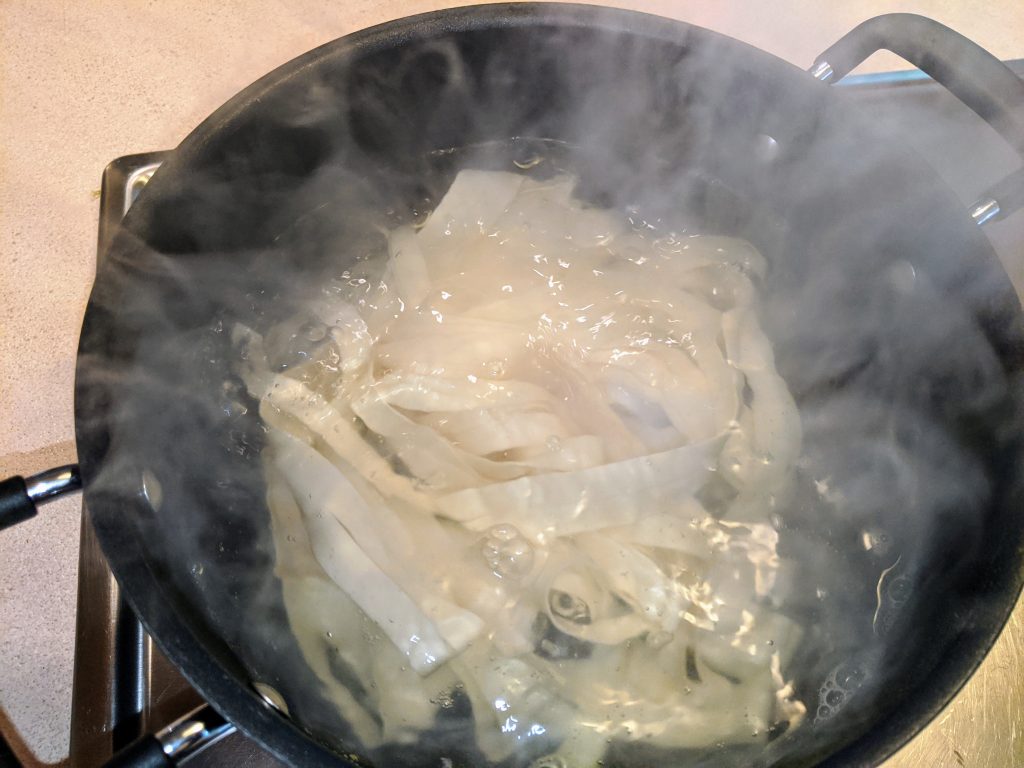
Carefully lower the pasta into the boiling water. Lower the heat just enough to keep the water boiling fully without being crazy. Use a big spoon to move the pasta around so it won’t stick.
Yes, you do have to cook pasta even if it’s freshly made. Raw flour and raw eggs are neither one recommended for your health.
Cook fresh pasta about 90 seconds or until it’s “al dente”.

Dump the pasta and water from the pan into a colander. Don’t turn the heat off on the burner as you pick up the pan; just turn it down to low. Shake the colander to remove excess water.

Put the pan right back onto the hot burner.
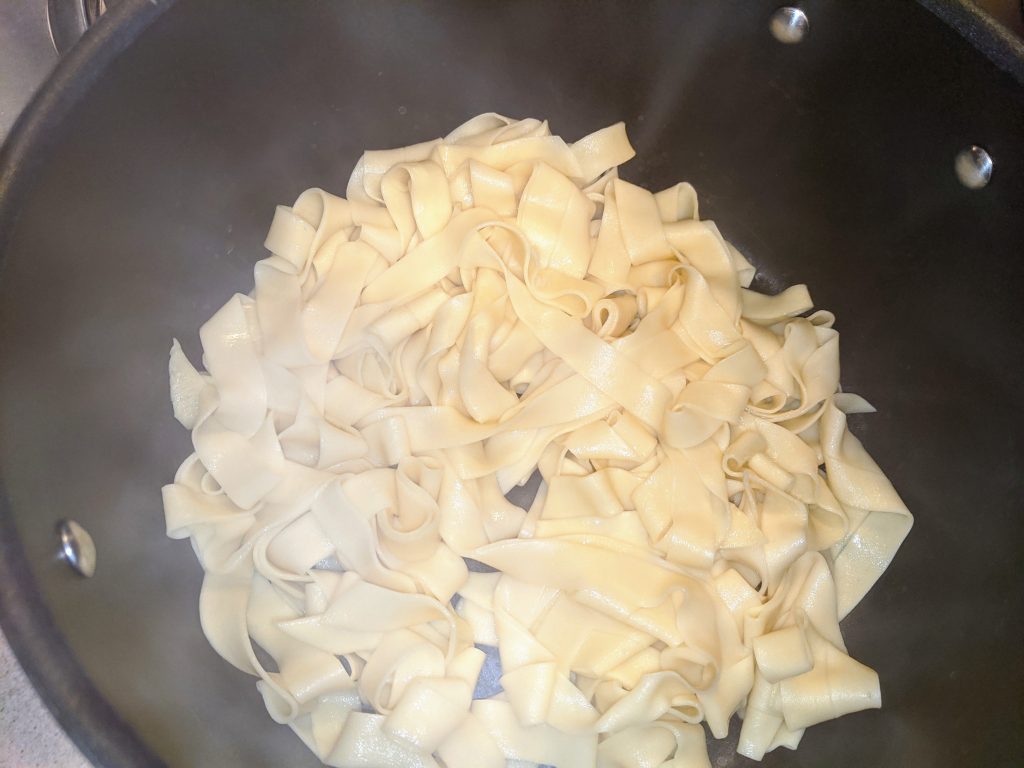
Quickly dump the colander back into the hot pan. It will steam for a few seconds. As soon as it stops, immediately take it off the burner.
If you’d like, stir in a couple of teaspoons (or more) of olive oil to keep the pasta from sticking.
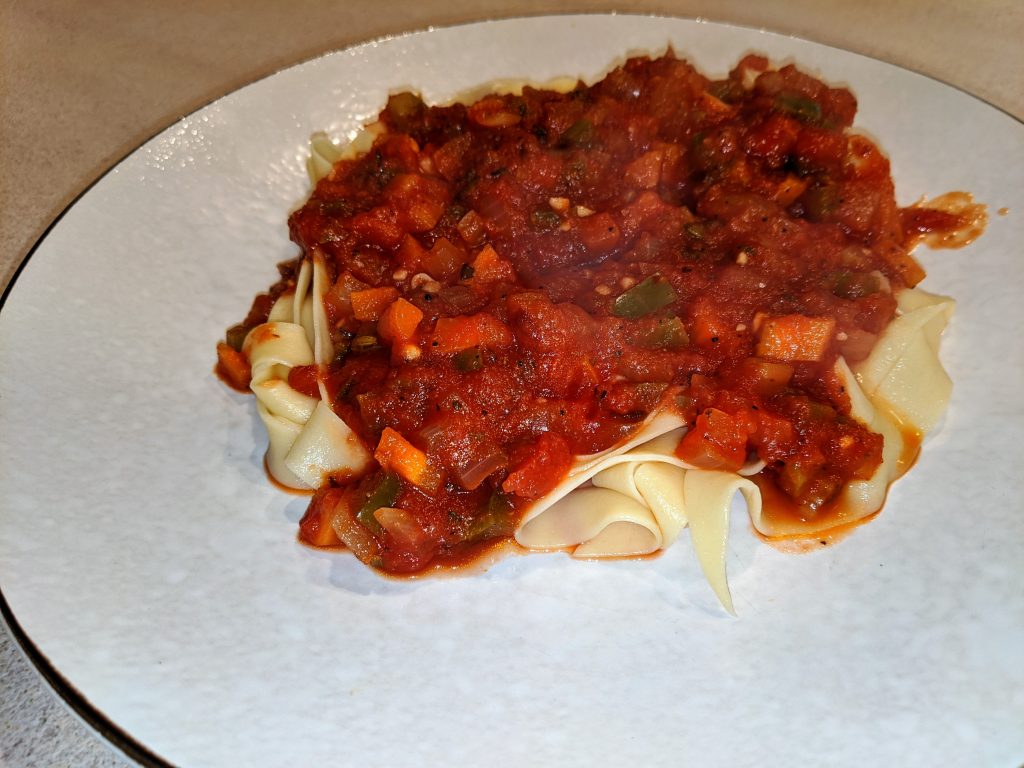
Serve in your favorite dish! Enjoy!